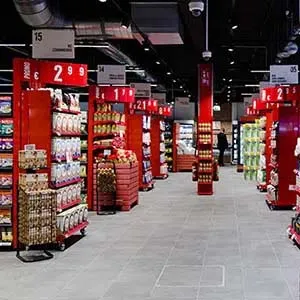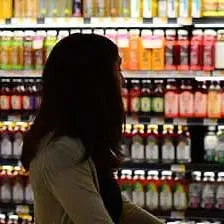5 golden rules for effective POP material creation
 At
a time when e-commerce is booming, POS display
remains the ideal merchandising medium to bring your products to the attention of shoppers in physical
retail locations. POS displays are appreciated by brand manufacturers and retailers to facilitate
purchase and stimulate sales, to make retail spaces interesting and exciting …
At
a time when e-commerce is booming, POS display
remains the ideal merchandising medium to bring your products to the attention of shoppers in physical
retail locations. POS displays are appreciated by brand manufacturers and retailers to facilitate
purchase and stimulate sales, to make retail spaces interesting and exciting …
POP materials have an impact on consumers at the decisive moment of purchase: more than one in three shoppers notices these merchandising tools and is tempted by them. Visual impactful, visible, clear and easy, they deliver significant added value to the point-of-sale.
There are three main display types, that can coexist:
- The countertop display unit: the ideal support for your impulse items in the smallest sales space.
- The floor-standing display unit is placed directly on the shop floor and is the ideal support to make it easy to sell your assortment.
- The on-shelf material grabs shoppers' attention walking through a shop' corridors.
Whatever solution you choose, 5 (simple, but essential) principles must be respected for your POP material to be successful.
Pilotes specializes in the design of commercial furniture, display and merchandising solutions. We offer 100% customized point-of-purchase materials tailored to the in-store projects of brand and retail. Because we care about the climate and environment, we analyze the lifecycle of each project to avoid, reduce, and offset its impact 🌍🌿
Do you have a project planned? Contact us and let’s bring your vision to life together!
1. Define the objectives of your project
The aim of each merchandising project is to get something new off the ground within a certain period of time. Depending on complexity, you can expect a development process of on average three to four months before installation of a permanent sales display on the shop floor. Count on a period of 2 to 3 weeks to develop, test and adapt ideas, 3 to 4 weeks for technical engineering and prototype, and finally a minimum of about 6 weeks for production, after which your logistics operations start. Although your POP partner can assist you, it is important that you, as a project leader, determine what the desired solution should look like: Promotional, temporary or permanent? Floor-standing, countertop or on-shelf display? Desired effect ? The 10-5-1 rule can serve as a basis: a display will generate interest at a distance of 10 metres; a display will clarify the range of products at a distance of 5 metres; and at a distance of 1 metre, the items on display are differentiated from competing offers!
2. Focus on functionality
Clear and simple merchandising brings greater effectiveness! Without completely losing aesthetics, practical considerations are more important: dimensions are adapted to the shop concept, the department and the aimed place on the shop floor, visible at a glance, readable and easy for shoppers …
3. Involve all departments in your project
When developing the ideal POP material, it is essential to share the project internally! Product and trade marketing, finance, purchasing and sales departments…. They are all valuable allies in the creative process and in the practical roll-out operations.
4. Your article is the star of your creative brief
Each creative process starts with a solid, coordinated creative brief. This can never be too precise. Which and how many products should be displayed and at what prices are they offered? What is the story, the promises, the values and the graphic charter of your brand? Although they can evolve, it is essential to keep an eye on planning, volumes and costs for creation, production, logistics and installation….
5. Coordinate delivery and practical operations
 A successful display is a material that is correctly installed on the shop floor! The last step of your
POP project, logistics and shop operations, needs to be carefully planned. Adapted packaging ensures
trouble-free logistics. Retailers should be informed in advance of the number and weight of pallets
being transshipped, so that they can prepare for the practical organization and reception on the
shop floor. Ideally, your sales and merchandising team is involved in the design of user instructions
and
all practical arrangements for an effective, successful installation of the material.
A successful display is a material that is correctly installed on the shop floor! The last step of your
POP project, logistics and shop operations, needs to be carefully planned. Adapted packaging ensures
trouble-free logistics. Retailers should be informed in advance of the number and weight of pallets
being transshipped, so that they can prepare for the practical organization and reception on the
shop floor. Ideally, your sales and merchandising team is involved in the design of user instructions
and
all practical arrangements for an effective, successful installation of the material.
Yes, you can :)





